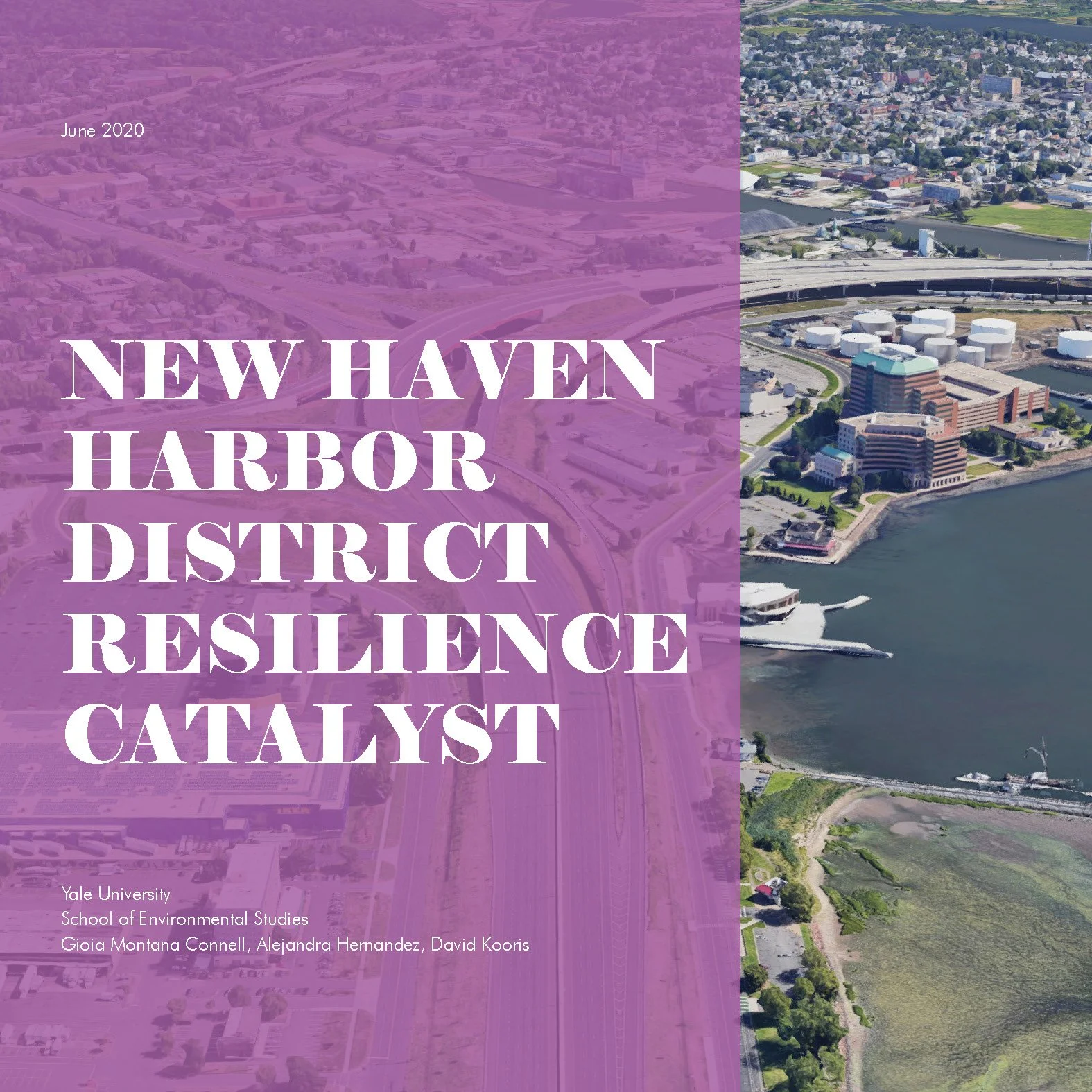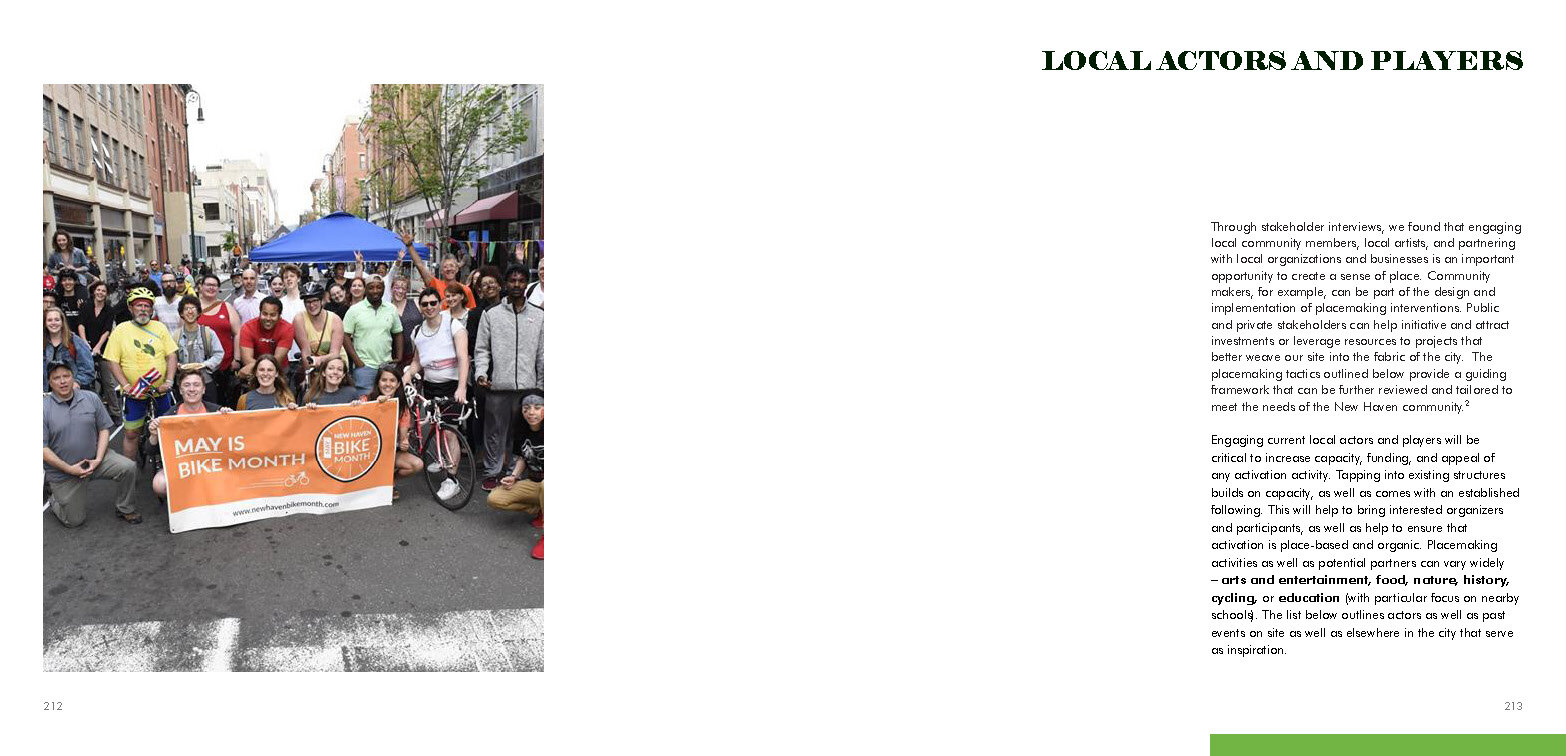
New Haven Harbor Resilience Catalyst
WRITING | ANALYSIS | CENSUS | GRAPHIC DESIGN | GEOSPATIAL
Gioia Montana Connell | Alejandra Hernandez | David Kooris
2020
New Haven has a wealth of underutilized ecological and economic assets that place it in a prime position for creative redevelopment. New Haven’s Maritime Center is one such asset. Located at the northeast corner of Long Wharf, it is a part of the city’s commercial base and adjacent to increasingly rare urban coastal wetlands. Yet as a functional island on the coast of the city, it is perceived to be cut off from surrounding neighborhoods by a tangle of interstate highways, city roads, and regional rails. In addition, it and the properties that surround it face critical challenges to development including sea level rise, aging infrastructure, pedestrian-unfriendliness, and lack of recreational amenities. Yet the size and location of the Maritime Center and its adjacent properites offer a unique opportunity for connecting citizens to the waterfront while also protecting valuable city and regional coastal infrastructure.
The plan seeks to help the surrounding community, the city, and private land owners achieve complementary goals—taking positive steps towards making New Haven’s waterfront both a destination and an intimate neighborhood. The plan is based on dual interest from the City of New Haven and locally based Fusco Corporation. The Fusco Corporation, founded in 1924, is the largest real estate company in Connecticut and is headquartered in the Maritime Center, a main site of interest for this report. Working across commercial construction, property management, and development, Fusco is woven into the fabric of New Haven after almost 100 years of work in the city. In addition, it is currently an active player in sustainable building, supporter of the International Living Future Institute, and member of the U.S. Green Building Council (USGBC) and Connecticut Green Building Council (CTGBC). With the proper structure, development of New Haven’s Maritime Center not only has the potential to redefine Long Wharf as a natural destination for the city, but also to serve as a genuine model for place-based public-private partnership.
This catalyst lays out strategies that tackle four key issues of harbor development—Flood Risk, Connectivity, Placemaking, and Economic Redevelopment. Mitigating flood risk related to storms and sea-level rise is the basic catalyst for development. Built on vulnerable landfill, Long Wharf is currently home to over 220 businesses, 7,960 employees, and brings in over $1.2 billion in sales, positioning itself as an important commercial and industrial center.1 Flood protection for the rail yards, a vital piece of infrastructure along the country’s Northeast Corridor, is important for New Haven, Connecticut, and the tristate region as a whole. By interweaving connectivity, economic development, and placemaking strategies into physical protections for critical infrastructure, key development stakeholders have the opportunity to create a sense of identity and belonging at the site to catalyze further investment to the benefit of residents, workers, and visitors alike.




















































